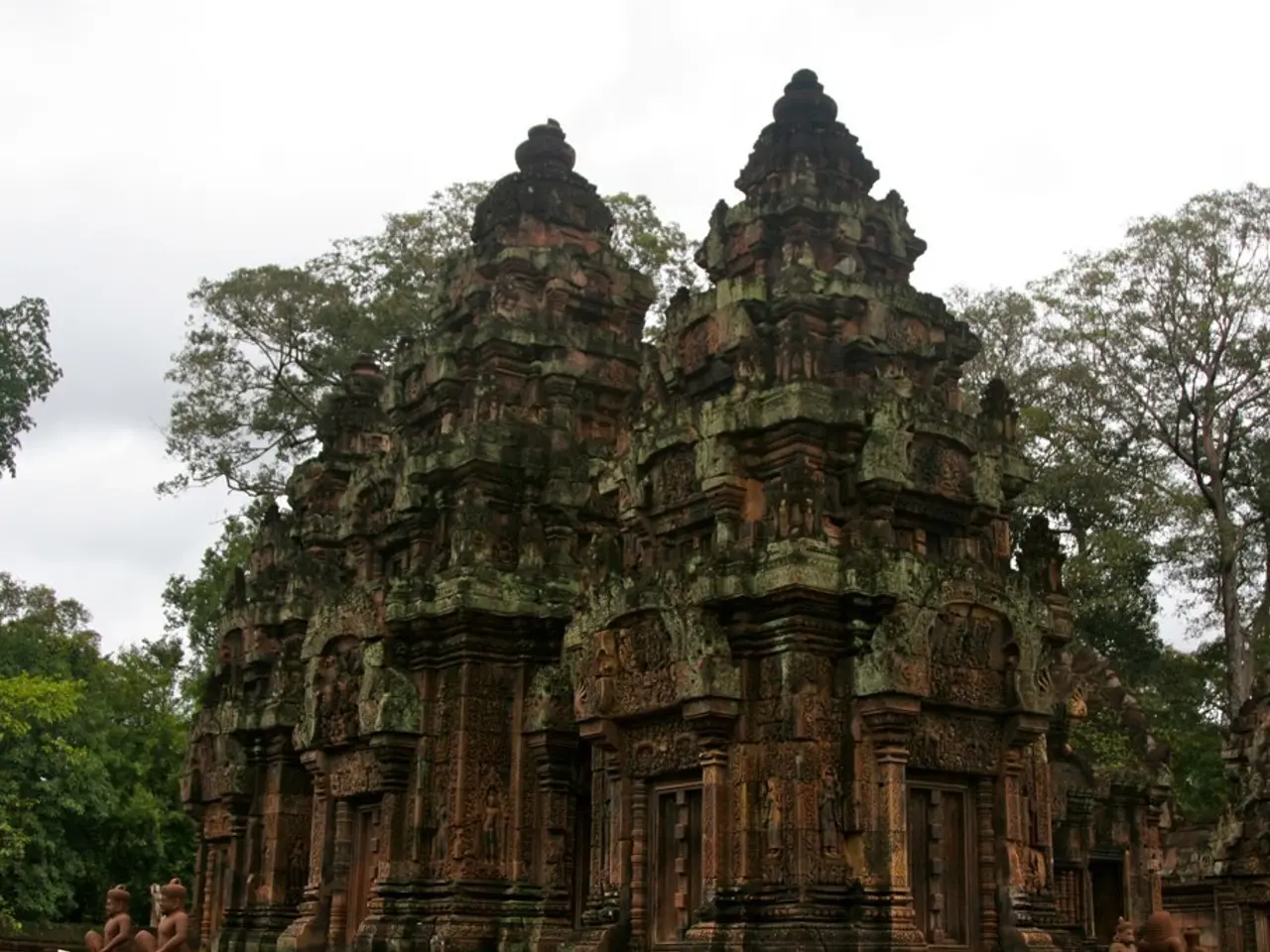Masroor Rock-Carved Temples in Himachal Pradesh
History is the vessel that carries our memories, our stories, to the future. This sentiment guided us to one such incredible piece of our past—the Masroor Rock-Cut Temples. Every civilization may rise and fall, but the majestic structures they leave behind offer precious insights into our ancestors' way of life.
The Masroor Rock-Cut Temples, nestled in Himachal Pradesh, are one such splendid monument chain. Though it shares company with the renowned Ellora Temples and others in Ellora, Mahabalipuram, and Dharmnar, these Himalayan pyramids possess their distinct charm. Located on a hilltop amid the majestic Dhauladhar Himalayan range, these temples stand three times larger than the other rock-cut temple complexes.
Masroor Temple Complex: A Glimpse Into the Past
Masroor Temple Complex, hidden about 60km from the bustling town of Dharamshala, boasts the largest structures carved from sandstone in Himachal Pradesh. Although partially in ruins due to the 1905 Kangra earthquake, these grand structures still remain a mesmerizing testament to the artistic prowess and halcyon days of ancient India.
The Artistry of Nagara Style Architecture
The Masroor temples are prime examples of Nagara style construction, characterized by the tower or pyramid forms of the buildings. Significantly, these temples in Himachal Pradesh follow the same principles as in Uttar Pradesh, Rajasthan, Orissa, and Central India. The temples are mainly approached by a single doorway, with the sanctum preceded by a mandapa. The shrine is broken down into three components—the socle, the wall, and the shikhara, each escalating in grandeur.
The Unconventional Architecture of the Masroor Temples
The Masroor Temples appear to be a complex of shrines at first glance. However, they form an integrated monument with the main shrine facing the Dhauladhar Peaks, deviating from the tradition of facing east towards the rising sun. The entire complex is planned on a square, symmetrical grid pattern. Its core sanctum, similar in square dimensions to other shrines and the mandapa, is surrounded by smaller temples in a mandala pattern.
Sculptures and Cave Carvings
Every corner of the temple walls bears the unmistakable artistry of the artists who carved these temples. The internal and external walls of the temples feature intricate carvings of floral and geometric patterns, animal motifs, and images from mythology that depict the way of life of the era gone by. Though affected by erosion in certain areas, the sheer craftsmanship and artistry on display are astounding.
Legends and Lore of the Masroor Rock-Cut Temples
The Masroor Rock-Cut Temples are steeped in fascinating legends. One story suggests that Pandavas from the Hindu epic Mahabharata spent significant periods of their exile here. According to another account, the entire temple complex was carved in one night! These mysteries contribute to the aura of mystique that surrounds the temples.
A Hidden Gem Revealed
While the Masroor Rock-Cut Temples may be lesser-known compared to the other rock-cut temples in India, they deserve attention for their architectural grandeur, sheer size, and the intricate carvings that adorn them. Since they boast a unique blend of styles, historical significance, and an air of mystery, these temples present a delightful, immersive journey into the past.
[1] "Masroor Rock Cut Temples in Kangra Himachal Pradesh" (n.d.). Archaeology of India.[2] "Masrur Rock Cut Temples." (2021). Inducation Learning.[3] "The Masroor Temples of Kangra Valley." (n.d.). The Indian Express.[4] "Masroor Rock Cut Temples" (n.d.). Himachal Travel Mart.[5] "A Historical and Architectural Overview of the Masroor Rock Cut Temple Complex" (2022). Gargi College.
The Masroor Temple Complex, hidden amidst the majestic Dhauladhar Himalayan range, offers a glimpse into the past with its splendid structures that embody the lifestyle of ancient India. Despite being a lesser-known treasure compared to other rock-cut temples in India, the Masroor Temples, with their unique architectural grandeur, distinct charm, and intricate travelogues in the form of sculptures and cave carvings, warrant attention.




